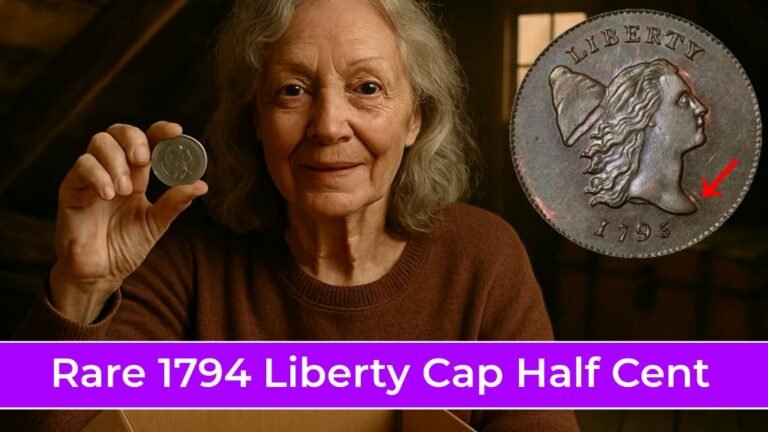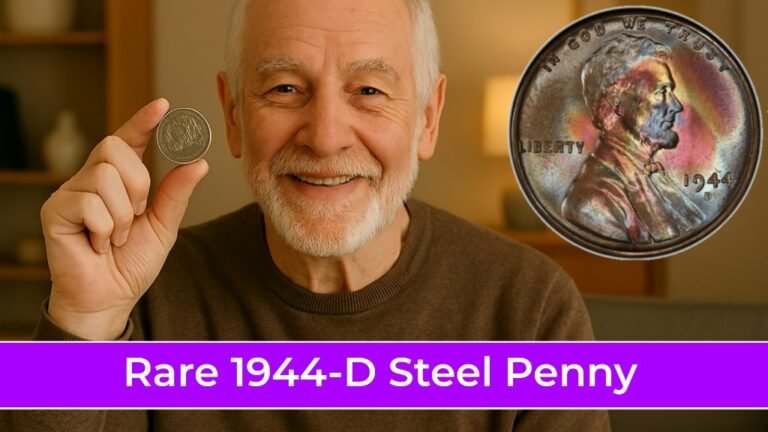The 1963 Franklin Half Dollar is a coin that is beautiful, has a lot of history, and is worth a lot of money. It is part of the famous Franklin series that was made from 1948 to 1963. This silver coin has Benjamin Franklin on one side and the Liberty Bell on the other. Collectors love it for its classic design and historical importance.
But is it possible that your 1963 Franklin Half Dollar is worth more than its face value or even more than the silver it contains? Even though a lot of these coins are common, some things can make this one worth a lot more.
Let’s look at what makes the 1963 Franklin Half Dollar possibly valuable and how you can tell if your coin is a hidden treasure.
Also read – 1909-S Indian Head Penny Worth a Fortune
What Makes the 1963 Franklin Half Dollar Special
The Franklin half dollar series is very important to American coin collectors, and the 1963 issue is especially interesting for a number of reasons:
- Silver Composition: Like all Franklin half dollars, the 1963 issue is made up of 90% silver and 10% copper. Each coin weighs 12.5 grams and has about 0.3617 ounces of pure silver in it. This gives it value based on the current price of silver.
- Last Year of the Series: The 1963 Franklin Half Dollar marks the end of an era. The Kennedy half dollar took its place in 1964, which was a symbolic goodbye to one of America’s most popular coin designs.
- Moderate Mintage: The Philadelphia Mint made more than 6.5 million coins (no mintmark), and the Denver Mint made almost 12.7 million coins (with a “D” mintmark). Even though these numbers are pretty high, high-grade examples and rare varieties can still sell for a lot of money.
- Possibility of Mistakes and Variations: The 1963 Franklin Half Dollar is not considered rare in circulated condition, but it can sometimes have mint mistakes or striking differences, like doubled dies or repunched mintmarks. These differences can make it worth a lot more as a collectible.
A Simple Breakdown of the 1963 Franklin Half Dollar
To help you learn more about the 1963 Franklin Half Dollar, here’s a simple chart that shows its most important features:
| Attribute | Details |
|---|---|
| Year | 1963 |
| Mint Marks | None (Philadelphia), D (Denver) |
| Type | Regular Strike (Circulation) |
| Mintage | ~6.5 million (Philadelphia), ~12.7 million (Denver) |
| Material | 90% silver, 10% copper |
| Weight | 12.5 grams |
| Diameter | 30.6 mm |
| Edge | Reeded |
| Obverse Design | Picture of Benjamin Franklin |
| Reverse Design | Liberty Bell with a small eagle on top |
| Special Notes | Last year of the Franklin series; made of silver |
Also read – 1921 Lincoln Wheat Penny Worth Big Money
Is Your 1963 Franklin Half Dollar Worth Something?
The silver content alone makes the 1963 Franklin Half Dollar worth more than its face value, but there are a few things that could make it even more valuable:
- Silver Spot Price: The melt value of a single 1963 Franklin Half Dollar is about $9–$10 at the current silver price (about $25 per ounce as of 2023). This guarantees that coins that have been used a lot still have a base value.
- High-Grade Examples: Coins that are graded MS-65 or higher by well-known services like PCGS or NGC can sell for a lot more money. A 1963-D Franklin Half Dollar in MS-65 condition, for instance, could be worth between $25 and $50, depending on how many people want it.
- Rare Varieties and Errors: Errors made at the mint, like doubled dies, off-center strikes, or repunched mintmarks, can make a coin worth a lot more. These mistakes are valuable to collectors because they are so rare and one-of-a-kind. Some error coins can sell for hundreds or even thousands of dollars.
- Historical Appeal: The 1963 issue is the last in the Franklin half dollar series, so it means a lot to a lot of collectors. People want it more because it is a “last-year” coin, especially those who are trying to complete a full set.
How to Judge Your 1963 Franklin Half Dollar
Here are some tips to help you figure out how much your 1963 Franklin Half Dollar might be worth:
- Check the Condition: Look for signs of wear, scratches, or fading. Coins that are in perfect, uncirculated condition are worth a lot more than coins that have been heavily circulated.
- Look for Mistakes: Check your coin carefully for mint mistakes, like double dates or inscriptions. These flaws can greatly increase its worth.
- Get It Graded: If your coin looks like it’s in great shape or has possible mistakes, you might want to send it to a professional grading service like PCGS or NGC. A high grade can really raise its value on the market.
- Compare Mint Marks: People who collect coins often want both the Philadelphia (no mintmark) and Denver (“D”) versions of the 1963 Franklin Half Dollar. You can see differences in strike quality and demand by comparing the two.
Final Thoughts
The 1963 Franklin Half Dollar may not be the rarest coin in the series, but its historical importance, silver content, and chance of finding high-grade examples make it a great piece for collectors. This coin is more than just pocket change; it could be worth more than you think. You might be interested in its classic design, its place in numismatic history, or its potential as an investment.
So, the next time you see a Franklin Half Dollar from 1963, look at it more closely. It could be worth more than you think!
FAQs
1. What is the 1963 Franklin Half Dollar made of?
It is composed of 90% silver and 10% copper, containing about 0.3617 ounces of pure silver.
2. How much is a 1963 Franklin Half Dollar worth?
Its silver melt value is around $9–$10 (at $25/oz silver), but higher-grade coins or rare varieties can be worth $25 to several hundred dollars.
3. Where was the 1963 Franklin Half Dollar minted?
It was struck at the Philadelphia Mint (no mintmark) and the Denver Mint (“D”).
4. Why is the 1963 Franklin Half Dollar significant?
It was the final year of the Franklin series, before being replaced by the Kennedy Half Dollar in 1964.
5. Can error coins from 1963 be valuable?
Yes. Errors such as doubled dies, off-center strikes, or repunched mintmarks can increase value dramatically, sometimes into the hundreds or thousands.




